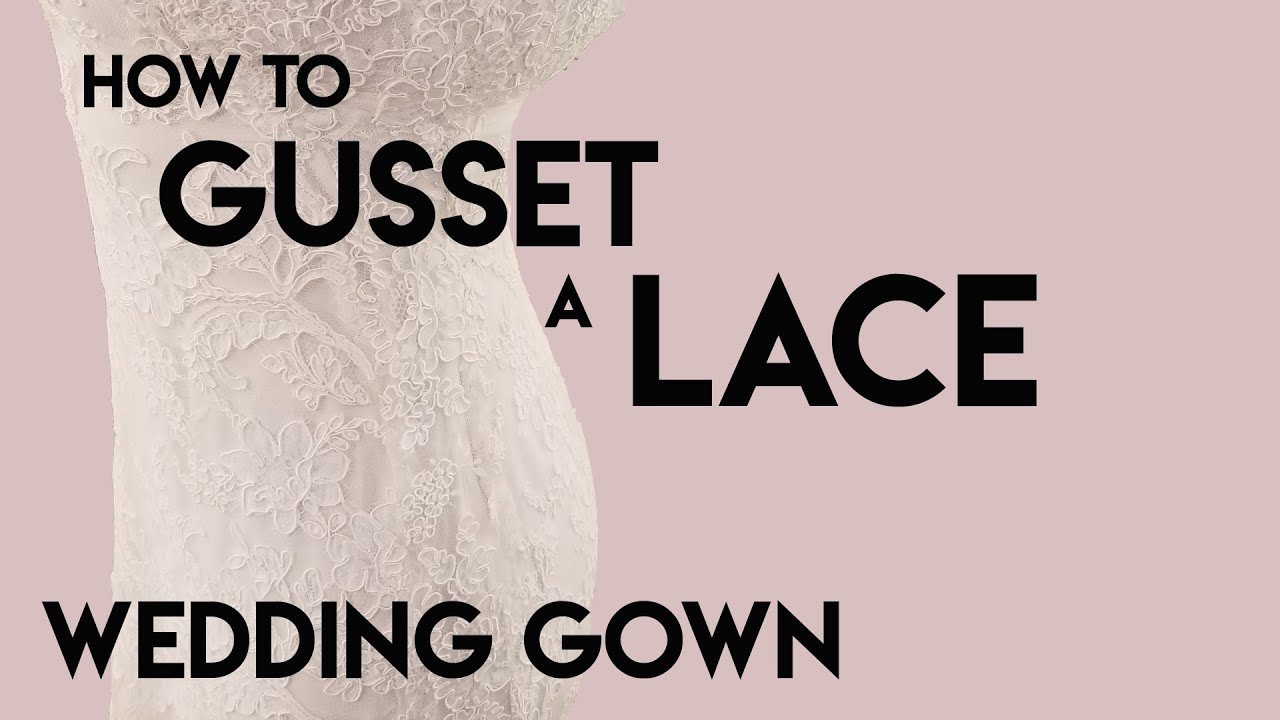Finding the perfect wedding dress is a priority for most brides. After all, their attire is one of the most memorable aspects of their special day. Upon ordering the dress, many brides often find themselves asking, “Can you make a wedding dress bigger?”
Yes, it is possible to make a wedding dress bigger. Every bride has to get her dress altered, as this will ensure a perfect fit. Extending or enlarging a wedding dress is a common type of wedding dress alteration.
Listed below are several methods for making your wedding dress bigger, followed by some factors you should consider before getting the dress resized. Lastly, several tips for making a wedding dress bigger are also given.
How Can You Make a Wedding Dress Bigger?
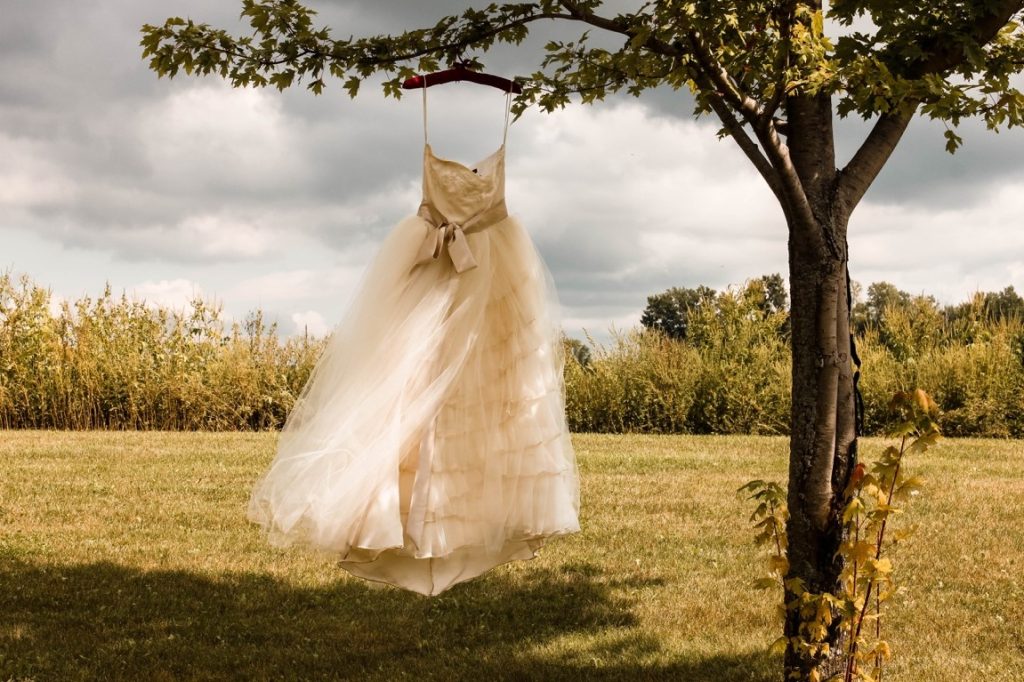
1. Letting out the Dress’s Seam Allowance
Most wedding dresses have a seam allowance of 1 to 3 inches on each side. A seamstress can “let out” this seam allowance. As a result, you can make your wedding dress bigger by 3 inches if necessary.
The first step in this process involves taking accurate measurements. With the zipper undone, the seamstress will inspect the area between the teeth of the zipper. The resulting measurement will give them an idea of how many inches of seam allowance they need to let out.
To let out the seam allowance, the seamstress must unfasten the stitching on the two side seams. These side seams are located below the arms.
2. Extending the Zipper of Your Wedding Dress
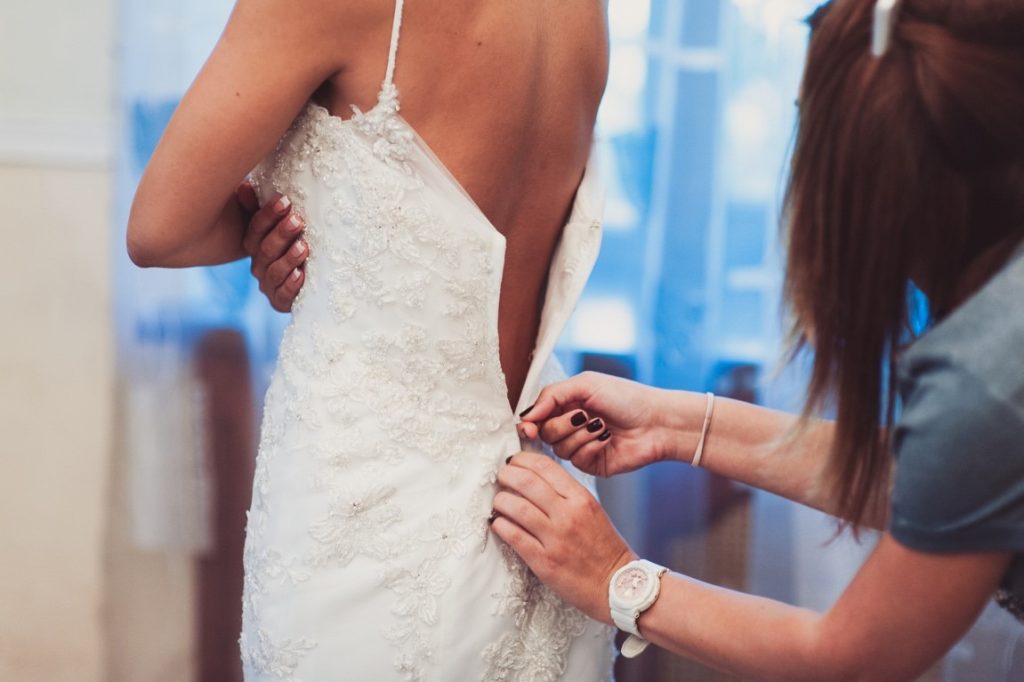
Another way your wedding dress’ size can be altered is by adding a zipper extender. As its name suggests, this will make the zipper of your dress longer. This method might not be applicable for every dress and situation, though. In some cases, it might be best to add a corset back instead.
3. Adding Side Zippers
If you need to widen your dress at the waist, side zippers might be the solution. Before proceeding, check if your wedding dress has sufficient seam allowances.
4. Adding a Corset Back
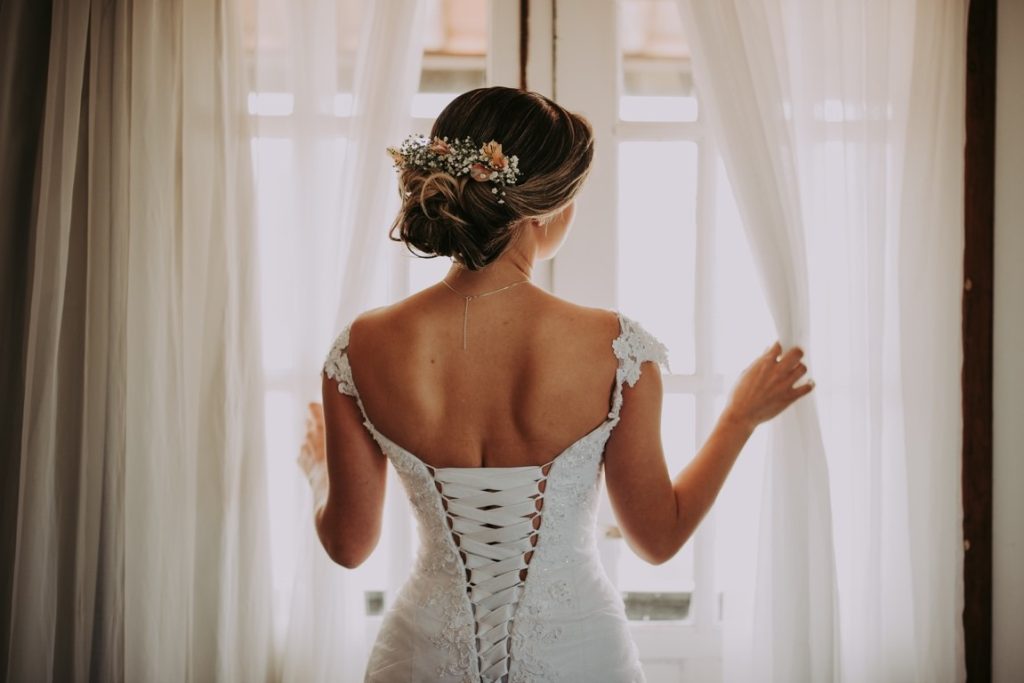
Your seamstress can also look into incorporating a corset back into your dress. This process is necessary if the seam allowance of your wedding dress is insubstantial. In fact, your wedding dress can become bigger by 5 inches once a corset back is added.
To start, your seamstress must remove the zipper on the back of your dress. Afterward, they will insert a panel of fabric and corset loops.
However, many people are skeptical about corsets in general. Popular media depicts corsets as highly restrictive, uncomfortable, and even dangerous to the wearers’ health. If you do not lace your corset too tightly and do not wear it too long, you will be fine.
Here are some more benefits of adding a corset back to your wedding dress:
- Improved support. The structure of a corset will nicely support your bust, which eliminates the need for a bra. Moreover, a corset will keep you in proper posture; if you tend to slouch, corsets can improve your posture.
- Looks good on all body types. It is a long-standing myth that only slim women can wear corsets. However, corsets inherently follow and accentuate your body line. They will flatter and emphasize your curves, all while looking natural.
- Cleaner silhouette. Corollary to the abovementioned advantage, the silhouette of your dress will be smoother. Because the corset back tightens the fit, no fabric will bunch up or crinkle. However, make sure that you put it on properly; for one, you need to be standing while the laces are fastened.
- Adjustable fit. With a corset back, you have breathing room to lose or gain some weight before your wedding. You can fasten the laces tighter or looser, depending on what feels right to you. As a result, you can spend less on alterations as a whole.
5. Adding a Gusset
Gussets are additional pieces of fabric that seamstresses can attach to the seam of a dress. A gusset will make the seam larger. The challenge with this procedure is matching the additional fabric to the dress. Commonly, a part is taken from the bottom of the dress.
If the fabrics or patterns cannot be matched, the seamstress can add the gusset around the zipper. Instead of looking off, the gusset can seem like a natural part of the dress.
6. Creating a Side Slit
On the bolder side of alterations, you can consider adding a side slit to your wedding dress. This will make your hips and legs feel more comfortable and freer. This process does not require any additional fabric.
7. Stretching the Fabric

Certain fabrics, such as stretch lace, stretch satin, cotton, velvet, and polyester, can be stretched. This method does not require any sewing. Rather, you will submerge the dress in cold water for several hours to a full day. There are plenty of tutorials online that you can consider trying.
However, this is not highly recommended. The results are likely to be imprecise; the dress might lose its silhouette, structure, and proper fit. If it is within your resources, consult an experienced seamstress about altering the size of your wedding dress.
Factors to Consider When Making a Wedding Dress Bigger
There are factors you need to keep in mind when deciding to make your wedding dress bigger. Not only will these factors affect the process, but they will also influence the cost and time needed for the alteration.
How Much Larger Does the Dress Need to Be?
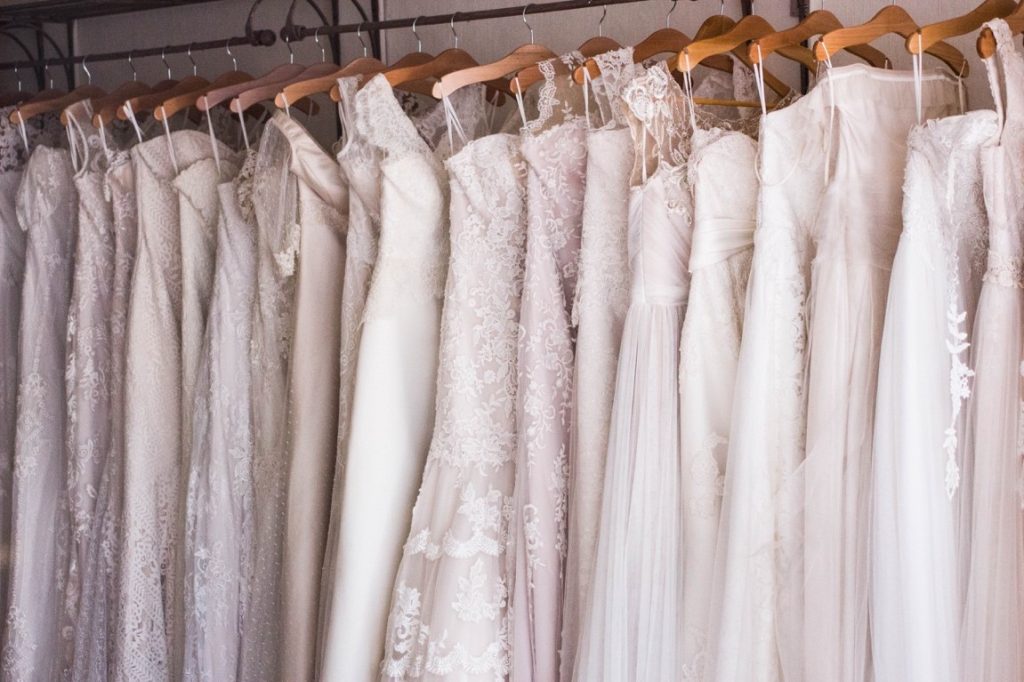
If you need an additional 1 to 5 inches, alterations are possible. On one hand, letting out the seam allowances of your dress can give your dress 3 inches. On the other hand, corset backs can give your dress 5 inches.
Ask your seamstress about your options, especially if you need more than 5 inches of additions. More alterations might be needed. They might also suggest returning or selling your original dress and picking a new one.
How Much Seam Allowance Does Your Dress Have?
As mentioned above, some dresses have 3 inches of seam allowances. However, some dresses might only have a seam allowance of ½ inch or ¼ inch on both sides. With this little allowance, letting it out is not a feasible option.
You can measure your dress’ seam allowance yourself. Turn the dress inside out, and the seam allowances should be visible. Using a fabric tape measure, measure the distance between the seam stitching and the end of the fabric.
What Type of Dress Are You Wearing?
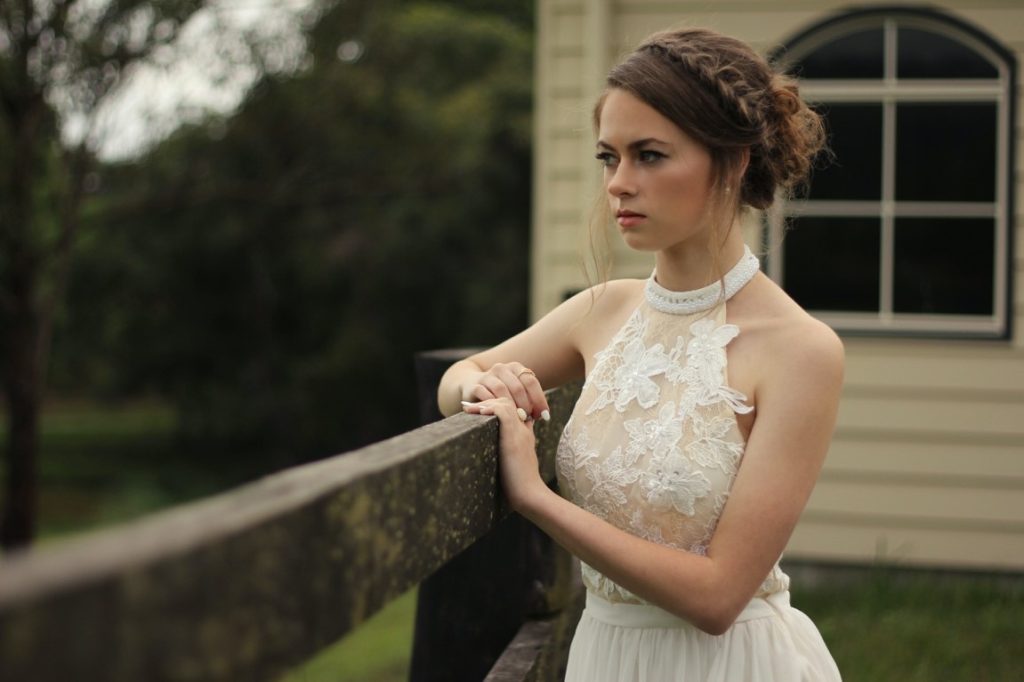
Wedding dresses, and other formal attire, usually have the aforementioned seam allowance. However, if you will be wearing semi-formal or casual dresses, you might not have this flexibility. Maxi dresses, sundresses, and similar pieces of clothing typically do not have a seam allowance. Their excess fabric is cut by a machine.
What Type of Material Is Your Dress Made Of?
Wedding dresses come in different materials and fabrics. Some common fabrics used for bridal dresses include chiffon, lace, silk, tulle, and organza. These fabrics have different properties, such as delicateness and structural integrity. As a result, some of them might be tricky to alter.
In some fabrics, the stitches will be obvious. This might make the dress look less appealing to you. The seamstress can hide marks from previous stitches using vinegar, water, and meticulous ironing. Alternatively, they can suggest adding a corset back to your dress instead.
Intricate and complex designs embedded in the fabric will also make alterations more challenging. For instance, if the lace trim is not detachable from the dress, some of the details might be lost.
What Other Details Does Your Dress Have?
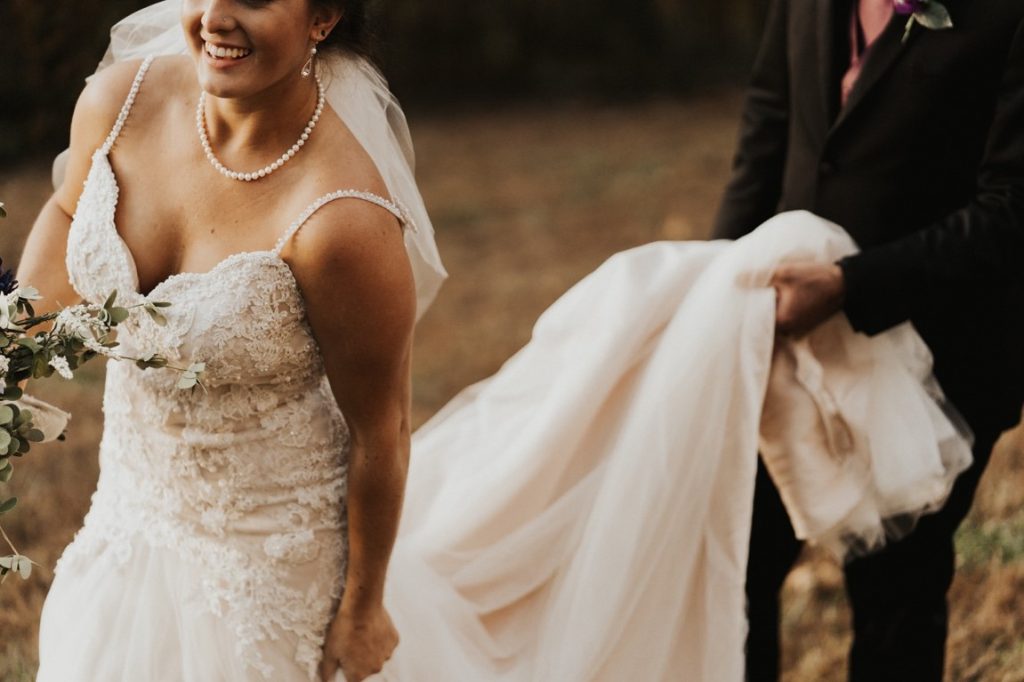
The entirety of your dress should also be taken into consideration. As an example, you might have a strapless wedding dress. You must be careful with letting it out, as you need the dress to still be tight enough to prevent it from slipping off.
Sequin, pearl, and beaded overlays will make the seamstress’s job more challenging. They have to meticulously take these details out before working on making your dress bigger. They then have to sew these details back onto the dress by hand.
The dress’s hem is another major consideration. Some types of hems, such as scalloped and horsehair braid, are more laborious to alter than others. The number of layers that need to be altered also gives the seamstress more work. Frequently, wedding dresses have around 3 to 4 layers.
Tips for Making Wedding Dresses Bigger
Firstly, you must keep in mind that wedding dress alterations are normal — if not a must — for any bride. Dresses are made according to standard sizes. These sizes and proportions are not accurate representations of any person’s body.
There is no shame in going for one to three fittings. Ultimately, your goal is to have a dress that makes you feel confident and beautiful.
Check Multiple Seamstresses
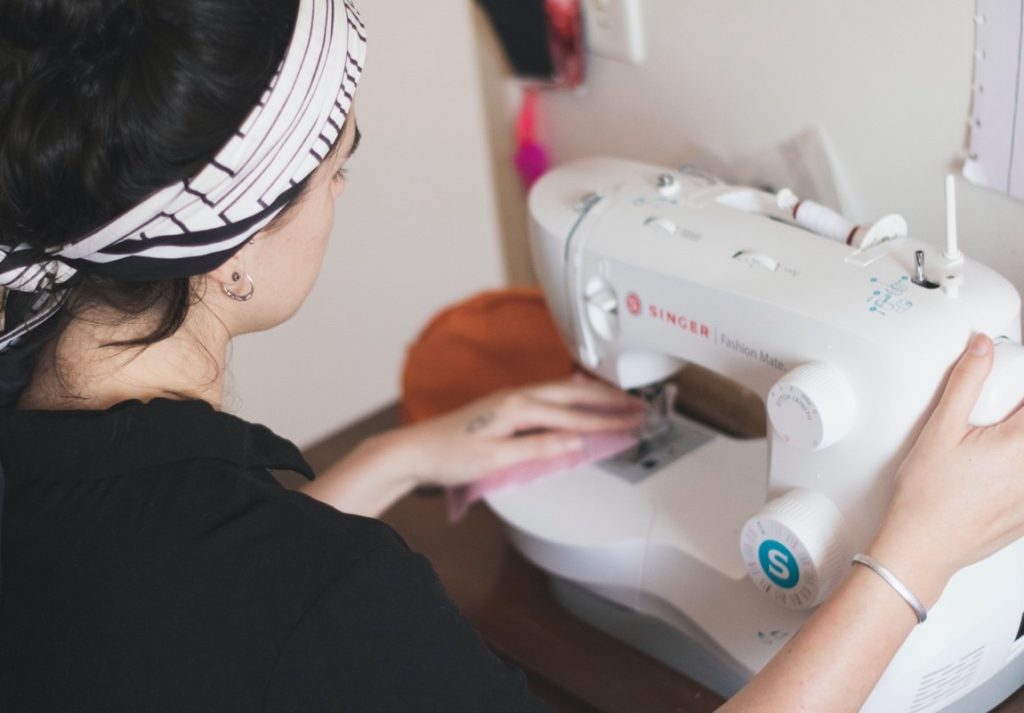
If you purchased a dress from a bridal boutique, odds are they have an in-house seamstress ready to work on alterations. They might charge a flat fee, or they might have different prices for each type of alteration.
However, it might be best to inquire with other local seamstresses first. The costs will be different; often, local seamstresses are less costly to hire than those working with a company. Do your research and check the reviews for each tailor and make your decision from there.
The Cost of Letting out a Dress
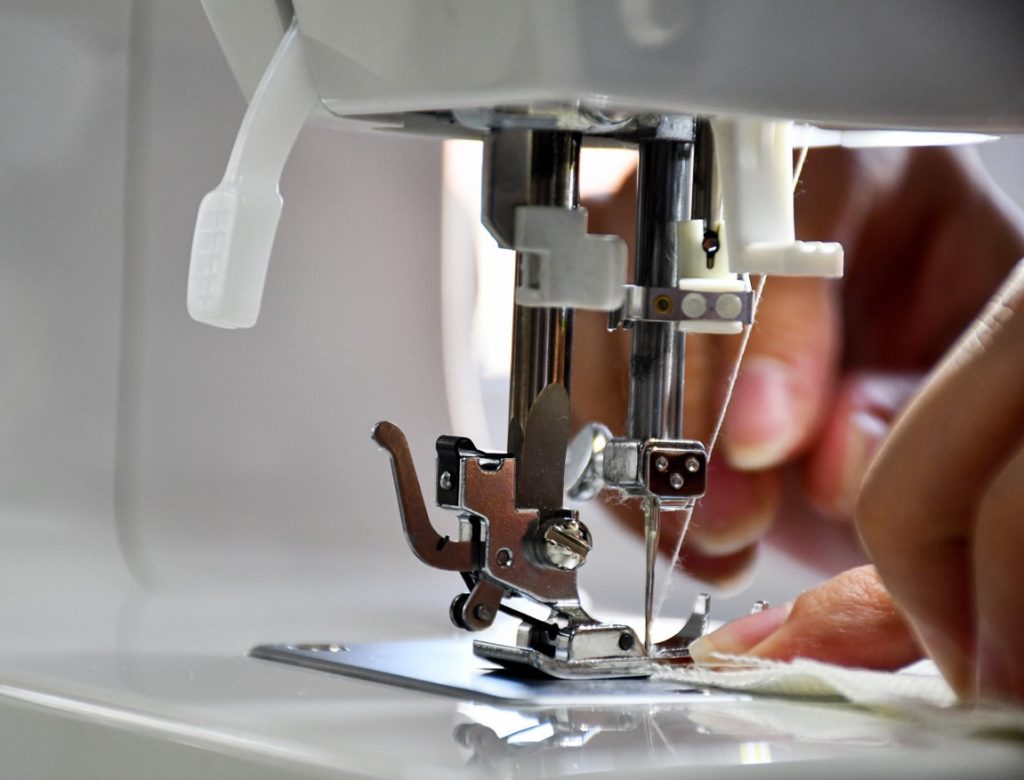
In general, expect to pay around $150 to $300 when making your wedding dress bigger. The final price is influenced by several factors, including some already mentioned above:
- The material of your dress, such as the details and fabrics used.
- What other alterations are needed. You might also need to consider getting alterations for the hem, sleeves, and bodice. You can also customize the dress even further with additional alterations.
- How much larger your dress needs to be. You can let out 3 inches from your seam allowance as mentioned above. This increases the amount of work for the seamstress, which ultimately adds to the price.
- The amount of work needed. Will the seamstress let out some of the seam allowances, or will they insert a corset back? Additionally, certain details need to be detached from the dress first before alterations are made. This is done to preserve their beauty.
- The cost of living in your area. Some states have a higher cost of living than others. This influences the amount of money necessary for an individual to survive. Seamstresses in areas with a high cost of living will charge more for their services.
- The current demand. During wedding season, boutiques and seamstresses are busy. You might need to wait longer and pay more for alterations during this time.
- The seamstress themselves. Are they working with a bridal boutique or store? Do they run their own business? Are they beginners in the industry? The experience and reputation of a seamstress have a direct impact on the fees they charge.
Buy a Bigger Dress

This tip might sound counterintuitive. However, you must remember that it is easier to reduce a dress’ size than increase it. When going wedding dress shopping, opt for a comfortable and bigger dress. The alterations will then focus on accentuating your body and embracing your natural figure.
Time Your Fittings and Alterations Right
Regardless of when you bought your dress, the best time for the first alterations is around 2 months before your special day. Usually, 1 to 3 fittings then follow. The last fitting should take place 1 to 2 weeks before the ceremony. Any last-minute adjustments are made at this point, which finally results in the perfect dress.
2 to 4 fittings are customary and practical. This process acknowledges that our bodies are constantly changing. Due to the stress of wedding planning, the bride is highly susceptible to small weight gains or losses.
Final Thoughts
Navigating through the process of enlarging a wedding dress requires attention to the various methods available, ensuring each bride achieves a flawless fit for her special day. With options ranging from seam allowances to the addition of gussets or incorporating a corset back, there’s a tailored solution for every unique dress-altering need, effectively answering the question of how to make a wedding dress bigger.
In this endeavor, it is crucial to approach with caution and informed wisdom. Seeking professional advice is invaluable, providing a clear roadmap to the delicate task of dress alteration, while simultaneously offering peace of mind as you prepare for the momentous occasion ahead.
